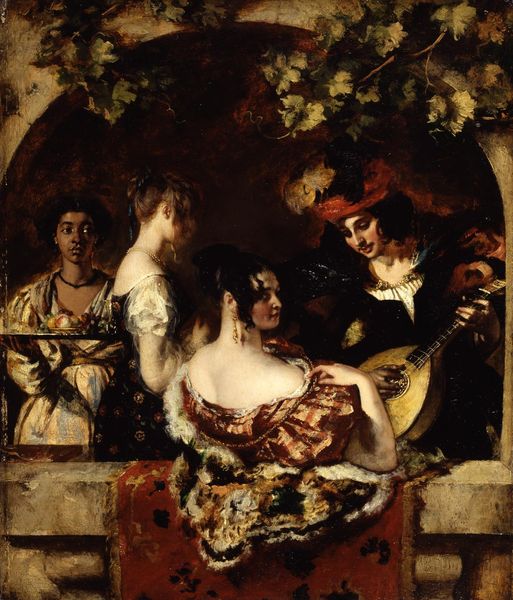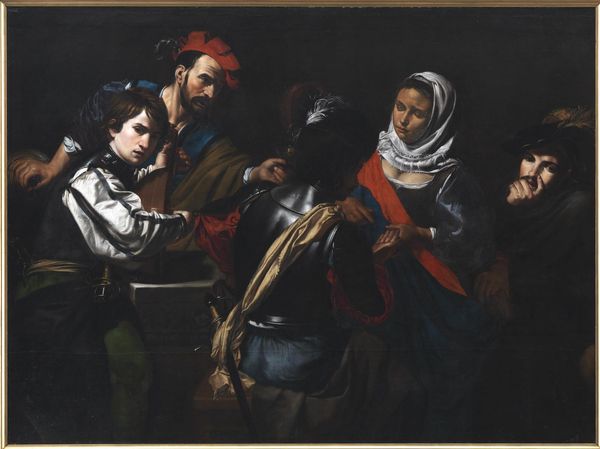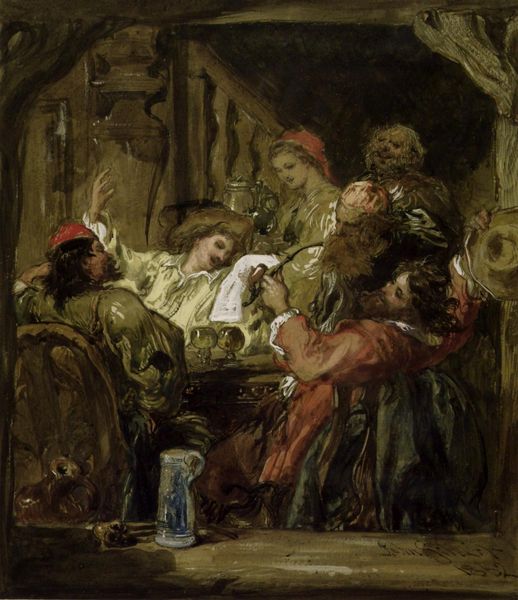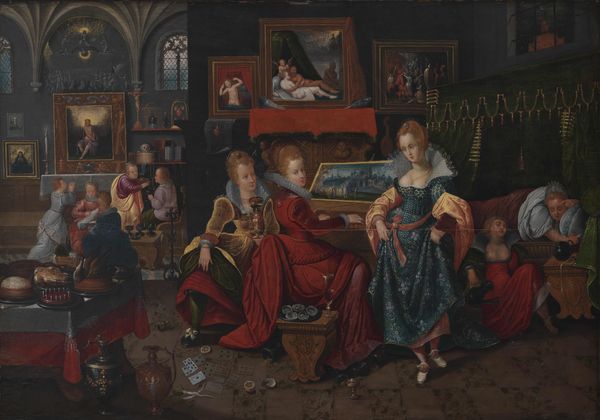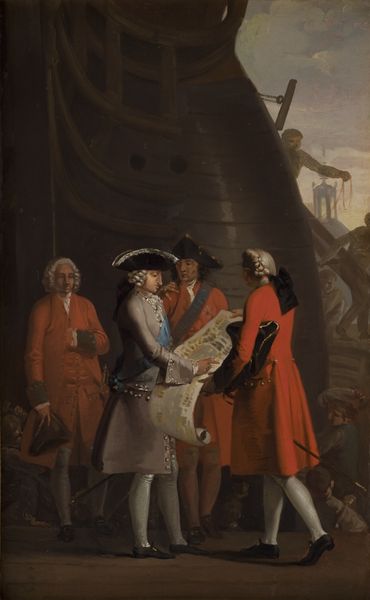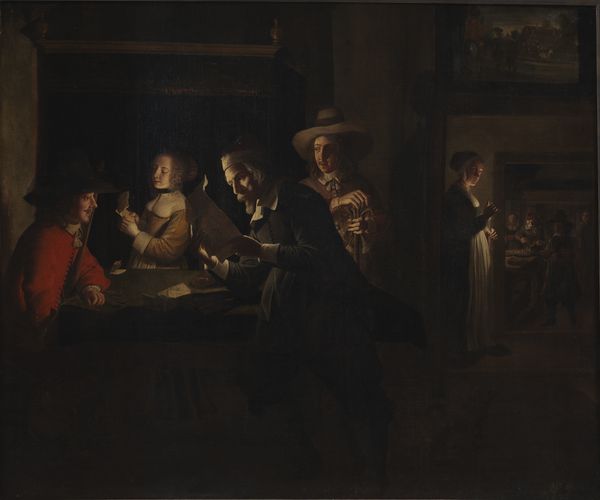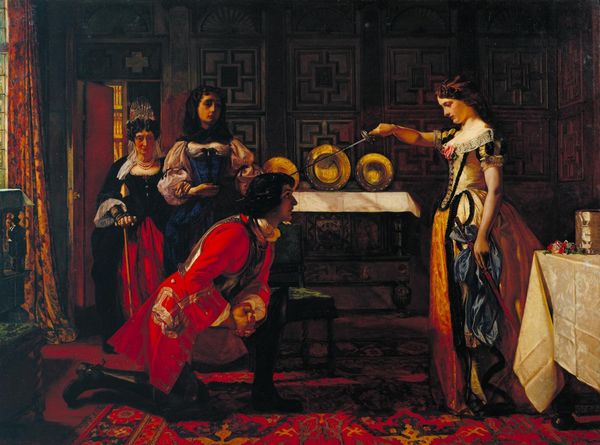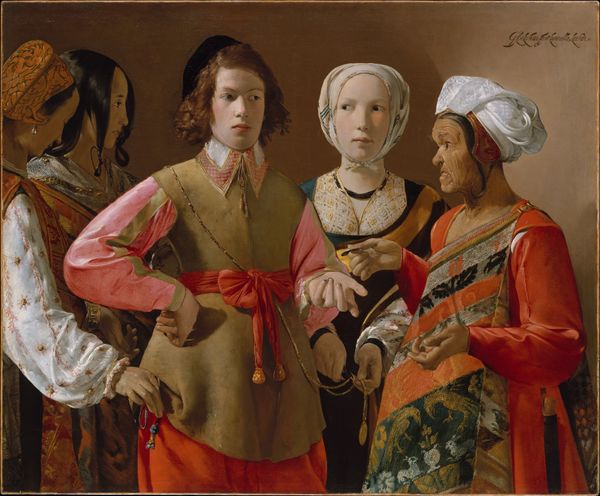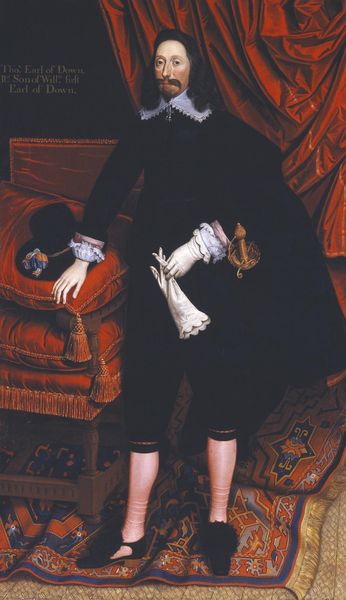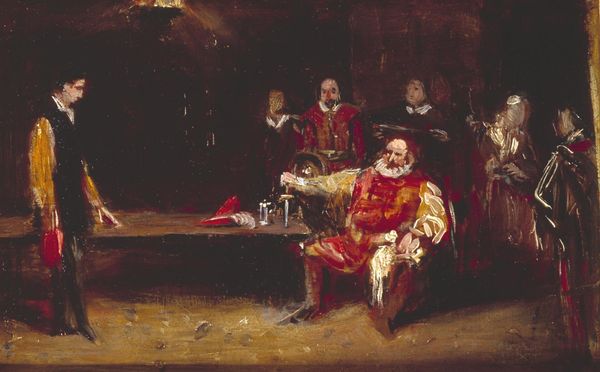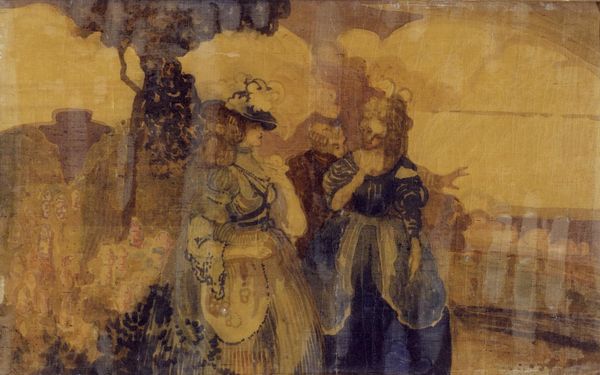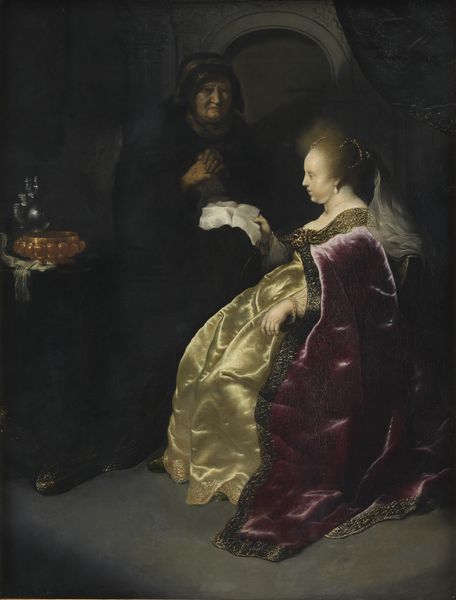
oil-paint
#
portrait
#
baroque
#
dutch-golden-age
#
oil-paint
#
figuration
#
oil painting
#
group-portraits
#
genre-painting
Dimensions: 143 x 130 cm
Copyright: Public domain
Curator: Let’s turn our attention to Johannes Vermeer's "The Procuress," an oil on canvas completed around 1656. The scene is brimming with immediate drama. What are your initial impressions? Editor: It's… unsettling. The composition feels both intimate and exploitative. The way the figures are arranged, it's clear there’s a power dynamic at play. There's tension inherent to that, isn't there? Curator: Precisely. Vermeer's deployment of light and shadow directs our gaze deliberately. Consider how the strong light source illuminates the central woman's face, creating a focal point. How do you interpret his use of chiaroscuro in the broader scheme of the painting? Editor: The light makes the figures pop, especially that yellow jacket! But doesn't it also underscore a kind of moral darkness, a stark contrast between the apparent gaiety and the seedier undertones? The woman is literally being highlighted and evaluated by the men who surround her. And it suggests how social customs influenced such gendered transactions. Curator: One could indeed view it through that lens. However, the textural qualities deserve analysis too. Observe the rendering of fabrics—the tapestry, the woman’s head covering, and the fine detailing in the men’s garments. How might such lavish elements speak to notions of status or consumerism in 17th-century Dutch society? Editor: I think the ornate objects speak directly to status and also, in this setting, serve to reinforce the woman's commodification. It points to a world where personal value is tied to possessions and physical allure. One could imagine similar scenarios happening daily in urban taverns, sanctioned by the era's customs and markets. Curator: And so, from formal arrangements to the symbolism of objects and light, Vermeer offers much for consideration in this intricate work. Editor: Ultimately, it reflects not only Vermeer’s technical brilliance but prompts us to look at societal values critically. It highlights the problematic elements that often exist just beneath the surface of our cultures.
Comments
No comments
Be the first to comment and join the conversation on the ultimate creative platform.
